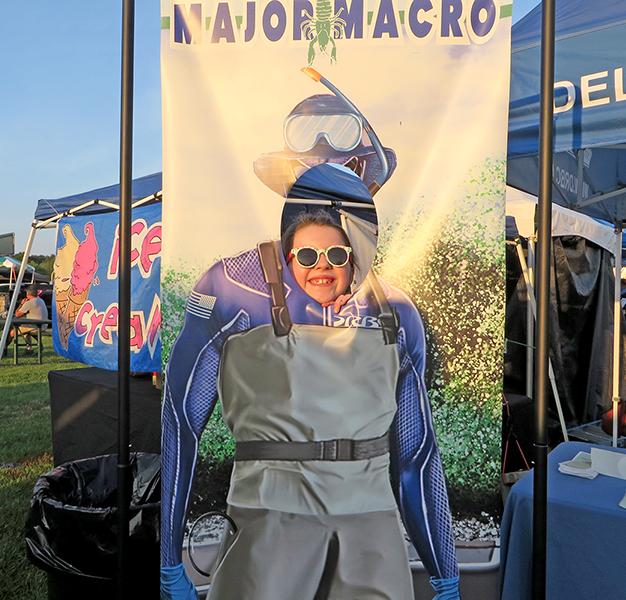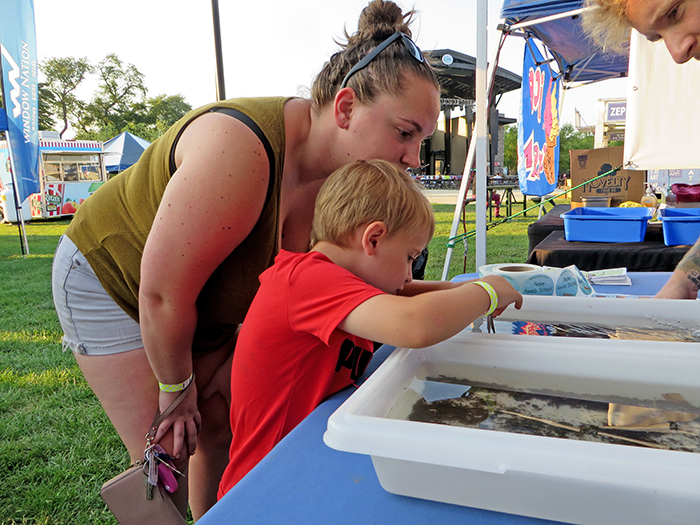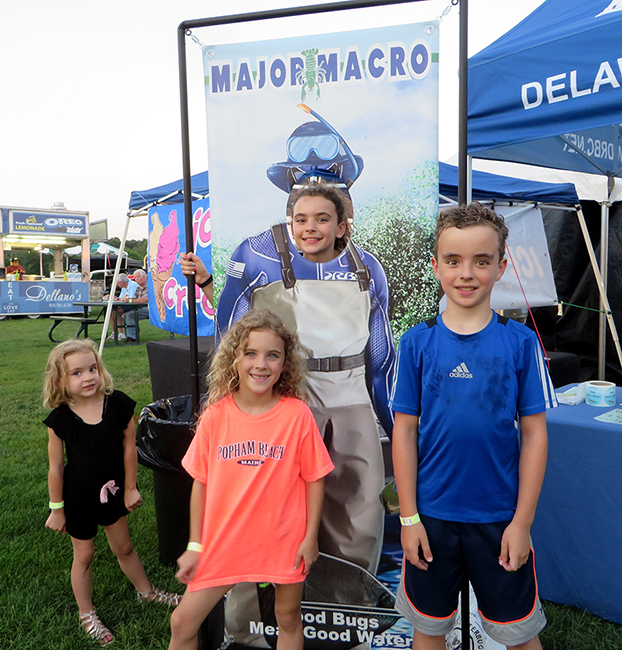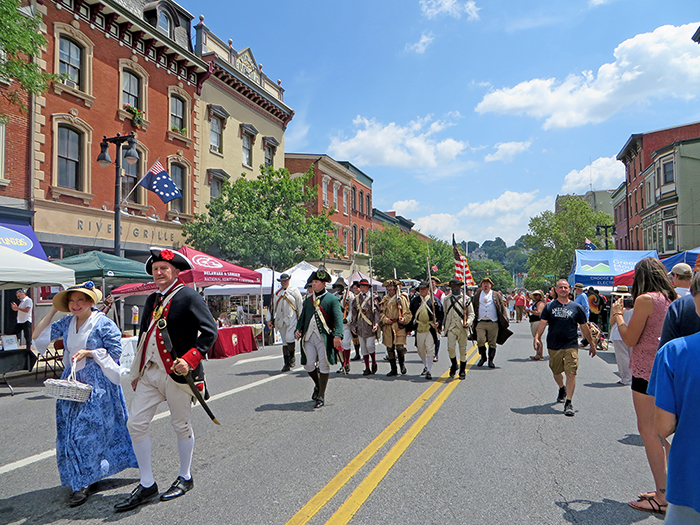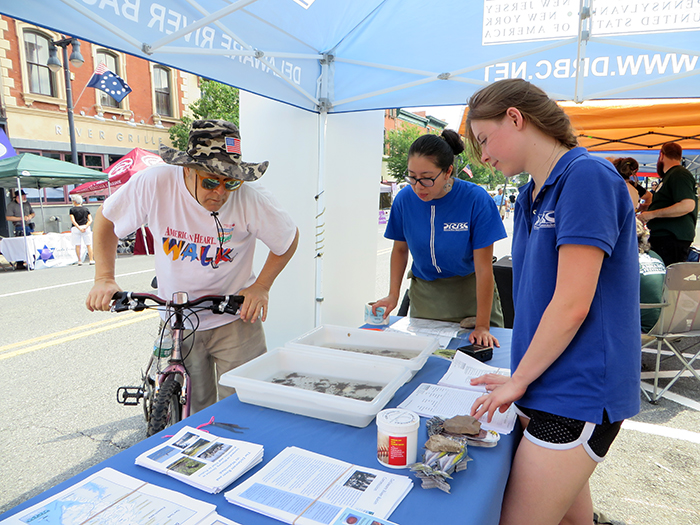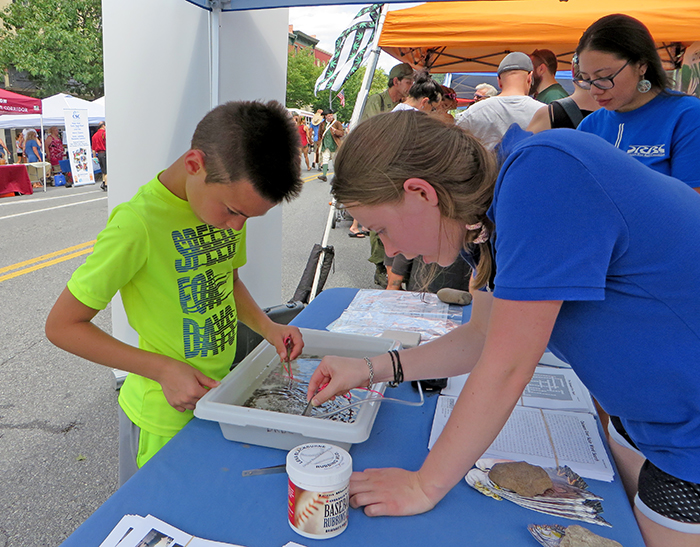Delaware • New Jersey • Pennsylvania
New York • United States of America
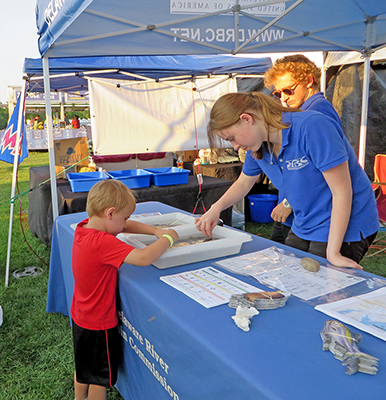 |
| DRBC Basin Outreach Intern Meg Ruggles helps a festival attendee check out our water bugs on display; fellow intern Alex Servis looks on. Photo by DRBC. |
DRBC exhibited at the Law Enforcement Against Drugs (L.E.A.D.) Fest State Fair in West Windsor, N.J.'s Mercer County Park to raise public awareness of the commission's role in monitoring the basin’s water quality. One of the ways we monitor water quality is to study macroinvertebrates (water bugs).
Staff collected a sample of water bugs from the Delaware River and brought them to the fair to display. Staff helped attendees identify them and determine what their presence says about the river’s health. An identification sheet was also provided for adults and kids who wanted to interact with the bugs themselves.
So, what's the connection? The condition of the water determines what species of macroinvertebrates can and cannot survive, so the type of bugs you find can help tell how clean a waterbody is. Factors that determine survival include temperature, pH, and dissolved oxygen levels, as well as the presence (or not) of contaminants.
DRBC staff and festival attendees identified pollution-tolerant organisms, found in almost any body of water, alongside many mayfly nymphs, a few stonefly nymphs, scuds, caddisfly larvae, and two water pennies. The presence of hyper-sensitive, pollution-intolerant mayfly, stonefly, caddisfly, and water pennies signifies that the water quality of the Delaware River is high since these water bugs wouldn’t survive without specific living conditions.
Attendees were able to experience a tangible result of the DRBC’s work to protect, monitor, and improve our basin’s water quality through the positive impact on aquatic life.
The fair, formally known as the Trenton Freedom Fest, is an event designed to aid local L.E.A.D. chapters and communities. Funds raised are used to support local communities, as well as agriculture and anti-drug programs.
The popularity of the L.E.A.D Fest State Fair for local communities provided DRBC with a good platform to communicate our work and how what we do helps provide clean water to everyone - and everything - that depends on it.
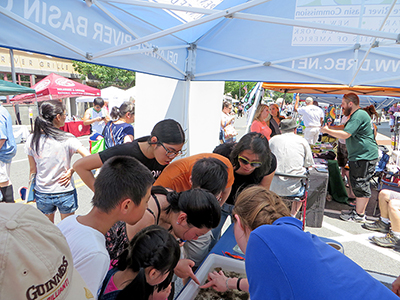 |
| DRBC Basin Outreach Intern Meg Ruggles points out a mayfly nymph to Heritage Day attendees. Photo by DRBC. |
The Delaware River Basin Commission (DRBC) exhibited at Easton Heritage Day to raise public awareness of DRBC’s role in managing, protecting, and improving the waters of the Delaware River Basin.
One of DRBC's great success stories is improved water quality. To help demonstrate, staff collected bugs from the Delaware River and displayed them in trays of water. Attendees who stopped by our table were able to see what we collected from the river and were given the opportunity to identify what we found, using keys and with staff assistance. Why? Because what bugs you find can help tell how clean the waterbody is!
DRBC staff identified three mayfly nymphs, two caddisfly larvae, several scuds, and a water beetle. The presence of these pollution-sensitive and pollution-intolerant organisms indicate that the water quality of the Delaware River is high at this location.
Attendees witnessed a tangible result of DRBC’s work to monitor the Delaware River Basin’s water quality through the healthy water bug indicators.
After a discussion on water quality, interested individuals were provided with informational handouts containing more detailed information on DRBC, its programs, and the basin area.
Throughout the day, parents returned with their children to collect shad and bald eagle bookmarks with fun facts on the back. This was a nifty way to get information across in a way that kids would enjoy.
Easton Heritage Day is a family friendly event that brings local communities together, providing DRBC with a large platform to educate residents on our efforts throughout the Delaware River Basin, which includes the Lehigh Valley. The nature of the event is a great way to engage kids and parents through relevant displays and conversation.
Copyright © Delaware River Basin Commission,
P.O. Box 7360, West Trenton, NJ 08628-0360
Phone (609)883-9500; Fax (609)883-9522
Thanks to NJ for hosting the DRBC website

